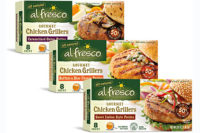Independent Processor's Prime Cuts
Q&A with SunTrust’s Todd Southerland
Independent Processor Editor-in-Chief Sam Gazdziak recently interviewed Todd Southerland, Food and Agribusiness Industry Manager for SunTrust Bank, based in Atlanta, Ga. Southerland discussed the state of the economy for meat processors in 2019, opportunities that lie ahead, and how to budget for food safety.
How do you see the economy performing in 2019, and do you think that performance will affect consumer eating/food purchasing habits?
My outlook for the economy in 2019 is fairly positive, despite some of the headwinds we continue to face with some trade partners and what has proven to be a difficult period for certain commodity prices. While some of our key financial indicators can be volatile from month-to-month, the overall trend in domestic jobs growth is positive and we are finally experiencing some uptick in interest rates, which reflects strength. Specific to the sector, the importance of the American food industry in the context of the global economy cannot be overstated because of the breadth and volume of our production capabilities along with our focus on food safety and product quality.
While I cannot necessarily predict how our relationship with China will evolve, the resiliency of this sector has proven time and again that we can open new doors and distribution routes to replace foreign markets when necessary. In some ways, the challenges we are experiencing with China have been an important reminder of the risks associated with being overly dependent on one trade partner, and this is an opportunity for certain sectors to rebalance for greater long-term prospects.
Ultimately, domestic demand for food is as diverse as it’s ever been, and as reflected in the growing statistics around convenience foods and away-from-home purchasing, consumers are allocating more disposable income towards these purchases to meet on-the-go lifestyles. I don’t foresee economic conditions having any material impact on these trends in 2019.
In general, what do you see for the meat and poultry industry in 2019? What will be the big challenges for processors, as well as the biggest opportunities?
There is no question we will continue to see production expansion among the three major proteins – chicken, beef, and pork – in 2019. Population growth and protein-rich diets will continue to support some degree of growth in supplies, but the pork and chicken sectors in particular remain somewhat reliant on export markets to buoy profitability. That’s where the biggest hurdle lies in 2019, along with a labor market that will continue to be challenging.
The chicken industry has historically shown some versatility in terms of identifying trading partners for dark meat, so I expect export levels to remain adequate, but it’s likely that leg quarter pricing will be less than ideal.
The pork sector bears a heavier burden because we are facing a continued glut of supplies and a Chinese market that isn’t helping to clear the overhang. The biggest opportunity for the domestic pork industry remains the potential negative impacts of African Swine Fever in China that could create a much needed boost in foreign demand. Otherwise, the most beneficial tailwinds for the protein industry should continue to be lower feed grain prices and strong consumer demand.
Small meat markets and mid-sized companies have enjoyed success in recent years, as they provide the high-quality, crafted meat products consumer desire. Will the economy still be friendly for them, or will they face challenges in the New Year?
As consumer tastes and preferences have evolved and become more distinguished, smaller companies have been more agile and responsive in providing customized solutions to meet these demands. This will undoubtedly continue in 2019 and beyond as the intersection between convenience foods and on-the-go-lifestyles continues to widen. Historically, the quick service food industry most commonly met this growing demand, but today’s consumer is increasingly focused on healthier alternatives that are often procured from non-traditional formats where food preparation was not a traditional focus. These growing distribution channels are heavily reliant on smaller companies that ease the burden of running a kitchen and provide differentiated products on a smaller scale to drive demand and loyalty among consumers. Ultimately, the choice made by consumers is with respect to the opportunity cost of time; consumers are willing to pay a premium for the added benefits of healthier foods delivered in a timely manner, which affords smaller companies with more flexibility with which to source ingredients and flavorings to further distinguish their products.
Do you think that smaller companies have any particular advantages in the consumer marketplace over the larger corporations?
Larger businesses tend to focus on scalability and volume at the expense of customization and innovation. It tends to be a “one size fits all” approach to sales and marketing, which is backed by some combination of brand awareness, larger advertising budgets, and a lower production cost structure due to buying power and the uniformity of the finished products. It’s an effective business model for a massive subset of the population, but it’s not the only business model that works. As the American population becomes more diverse and disposable incomes rise, we are becoming an ever-curious nation of consumers when it comes to food and culinary experiences. This is largely being met by the innovation taking place among smaller companies where cost minimization is not the most significant determinant of success. These companies produce premium, differentiated products that garner premium selling prices, albeit among a smaller base of consumers. Nonetheless, these smaller businesses command higher margins, which enable them to experiment with a vast array of new and exciting products and flavor profiles that aren’t widely available in the marketplace today. In what remains a highly competitive food retailing industry, innovation among smaller companies is noteworthy among customers who value that differentiation.
Food safety is a perennial concern for any meat processor. How should processors determine their budgets for food safety issues, especially if they’re smaller companies with more limited budgets? What would be the priorities?
A budget for food safety should be derived from business continuity plans that exist in part to help quantify the impact of a potential food safety event. This starts with preparedness and hinges on traceability within the supply chain, both of which serve to limit the scope of a food safety problem when it occurs and minimize the immediate financial impact it may cause. The unfortunate truth, however, is that the broader risk to the solvency of a business may not relate to this direct and immediate financial loss but rather to the reputational harm that can be done if a company loses trust among consumers. The former can often be solved through insurance recoveries or capital injections; the latter is very difficult to recoup. The good news for companies is that investing in preparedness is not overly expensive. Employees at all levels of the organization need to be trained to both understand and perform their responsibilities so that an immediate and cohesive response can be undertaken if a problem occurs. Practicing simulations of such an occurrence is an excellent way to ensure readiness.
What is one thing you would recommend a small processor do in 2019 to help ensure a successful year?
Given the cyclicality associated with the food industry, I think it’s especially helpful when businesses take the long view and don’t let short-term results impact their overarching willingness to make sound decisions for longer-term success. For that reason, the advice I would offer to a smaller processor relates to the concept of sustainable growth - align your business with customers, suppliers and other partners that have similar goals and that share your passion about the future of the food industry. This significantly advances your ability to become an invaluable, if not irreplaceable, part of the supply chain in which you participate, and it creates mutually beneficial relationships that help to insulate you from the inevitable challenges that will arise along the way.
Looking for a reprint of this article?
From high-res PDFs to custom plaques, order your copy today!






